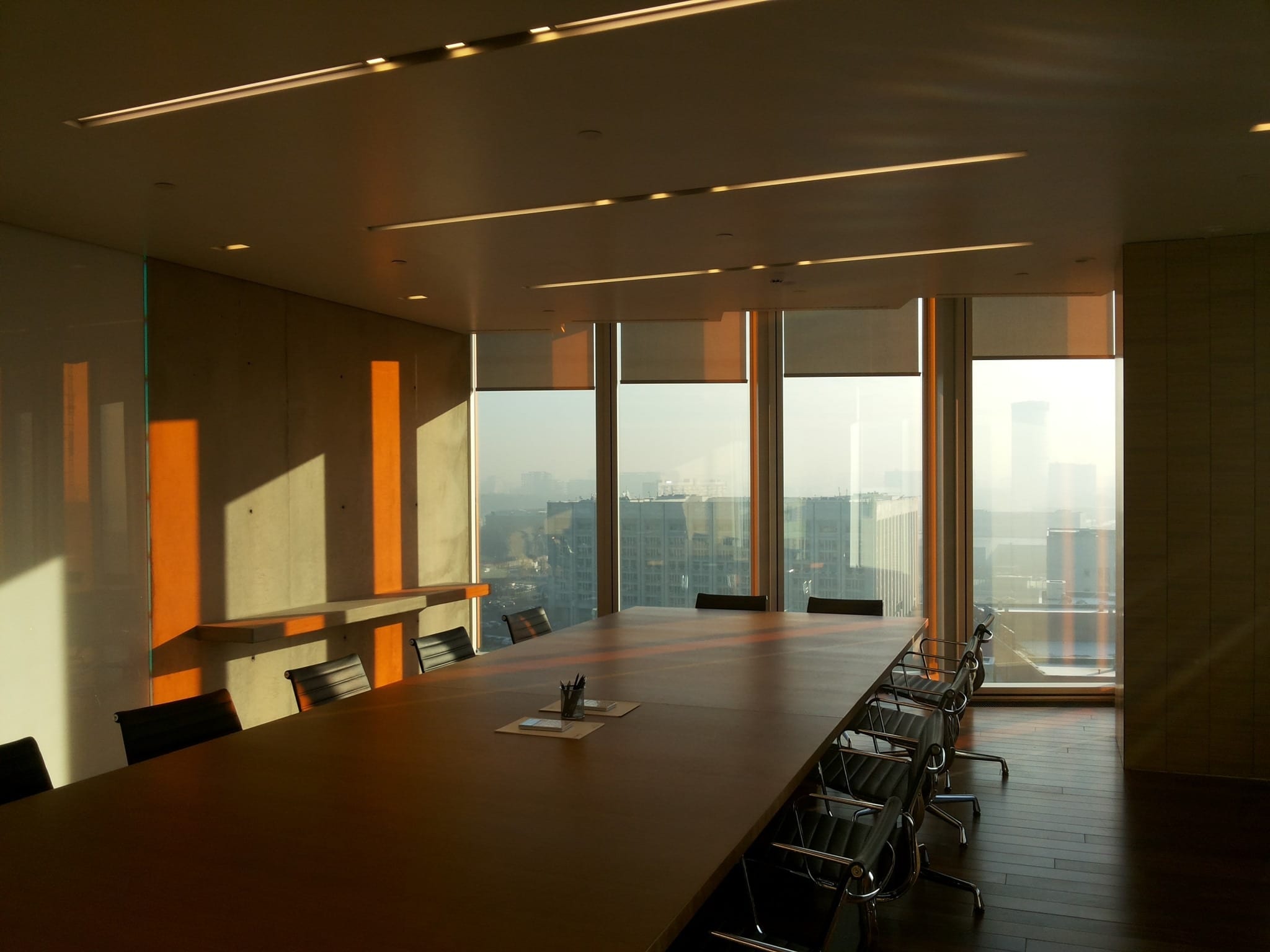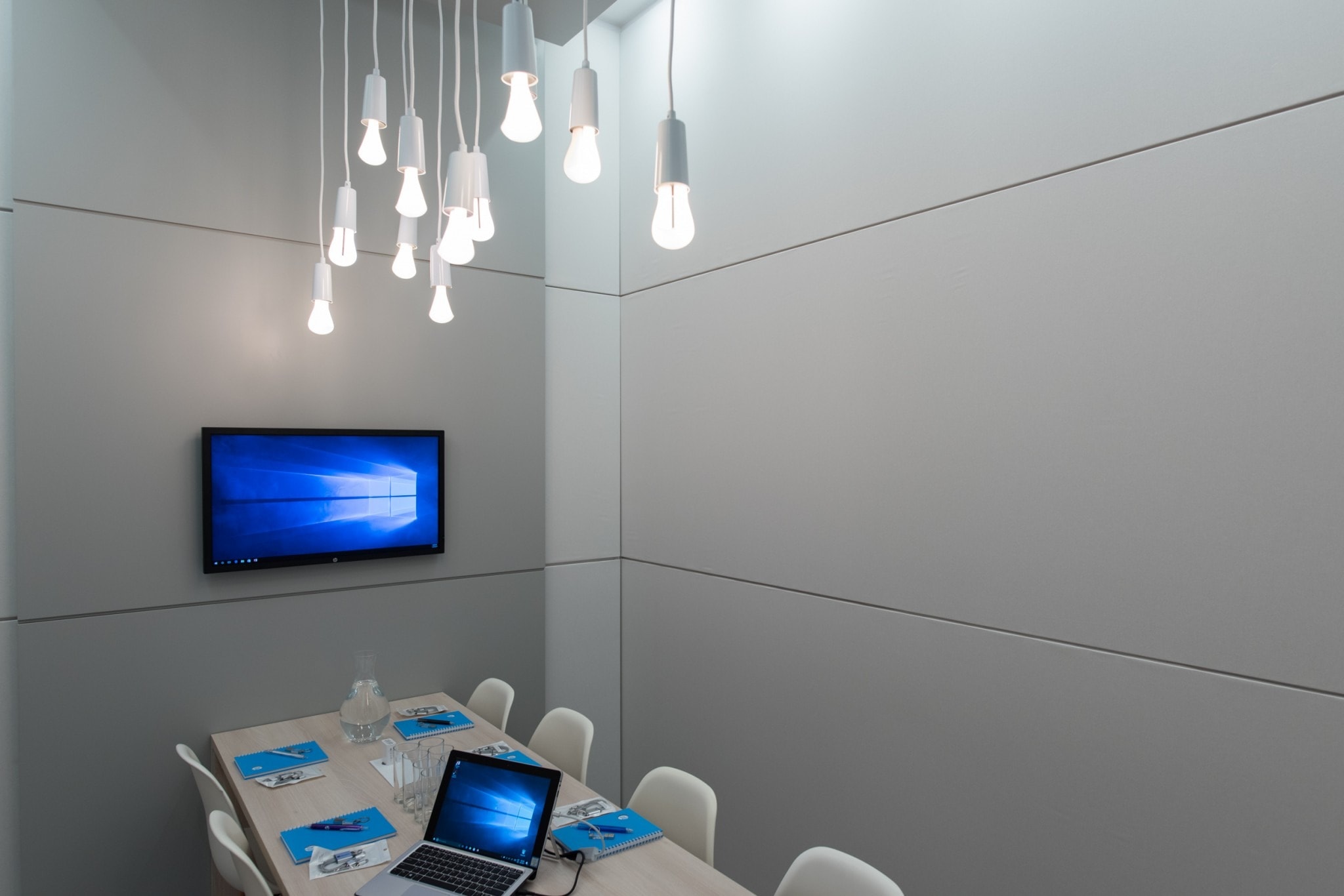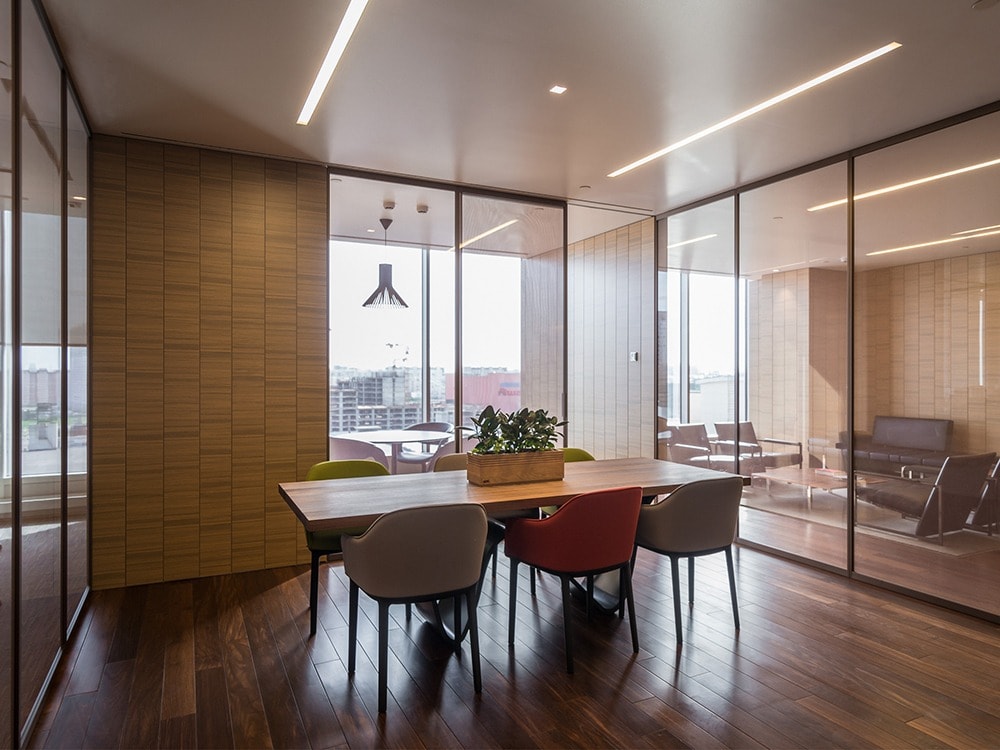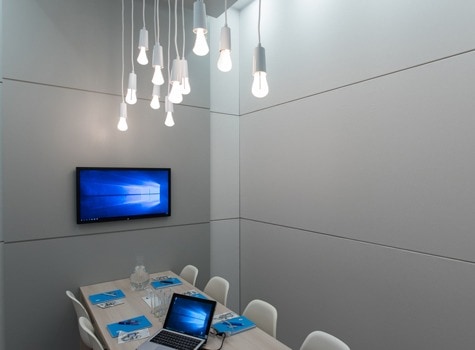Both natural and artificial light have a significant influence on employee productivity and staff morale. Consider these tips to transform your office lighting and get the best out of your team.
Changes in lifestyle and environment
Fundamentally, human beings evolved to spend their days outside during daylight hours, be it working on the land or back to our existence as hunter gatherers. The advent of the industrial revolution marked the beginning of a dramatic change in the daily patterns of human beings.
This, along with the widespread use of electric lighting, meant that people became much more sedentary and spent a large proportion of their days indoors, in some cases without any access to daylight at all, within factory buildings and some early office buildings.
Today, typical office workers can easily spend 40% of their waking, working week in the office – a hugely significant percentage. The constantly changing levels of daylight reaching levels around one hundred thousand lux were, generally speaking, replaced by a constant light level of between 300 and 500lux. Furthermore, the typical office lit effect that would follow previous lighting standards would be a uniform, bland lit effect akin to an overcast day; not the sharp shadows created by sunlight or the variations created from a mixed sky.
It is no wonder, given this significant change in lifestyle and environment, that this has a growing impact on human beings physically and mentally. As a result, we are highly sensitive to the amount of daylight that can be present in today’s offices and the way that artificial office lighting is used.
Low levels of daylight and exposure to unchanging, uniform artificial light for prolonged periods are linked with depression, anxiety, increased absenteeism, insomnia and osteoporosis.
Workplace considerations: A fine balance between natural and artificial light
Natural Light
It is key to provide office workers with views to the outside world. These views provide people with an awareness of the passing of time, during the day and during the year. This provides triggers for our circadian rhythm to regulate.
In addition to the connection with the outside world, the quality of daylight has benefits over traditional artificial office lighting. The colour temperature of the light will change throughout the day and throughout the year, from a warmer light at the start and end of the day, to a cooler light in the middle. This again provides stimulation through change.
In addition, daylight itself (depending on the glazing types used in the office windows) has a full spectral distribution. This includes non-visible wavelengths of light that are beneficial for ensuring we remain alert and facilitates the function of our circadian rhythm. If we compare the spectral distribution of daylight with most forms of artificial lighting it is clear that artificial light is deficient in large chunks of the spectrum, consequently so are those exposed to artificial light.
Daylight will need to be controlled to ensure that glare, particularly on computer screens, is not a problem to office workers. In addition, solar gain needs to be limited to ensure a comfortable environment is created.

Artificial Light
Artificial office lighting needs to work with daylight and also provide the sole light source after dark.
The distribution of artificial light throughout an office is key to providing a visually stimulating environment. A balance of indirect light on the ceiling and walls should be combined with some direct downlighting.
Recent trends in office design have seen a move away from the fully open plan expanse of desks, towards environments that are much more modular and flexible with changing uses across the office floor. These include break-out areas, privacy spaces, informal meeting areas and standing desks etc.
This creates an opportunity for light to help create a more stimulating and engaging environment, moving away from the more traditional uniform, almost stagnant solutions. There is a much greater shift towards local task lighting to provide high light levels where needed, often as part of a lower level lighting scheme with uplighting, focal points and some features throughout the environment.

Lighting guidelines from The International Well Building Institute
Launched in 2014, the Well Standard from the International Well Building Institute provides guidelines to help create a lit environment that minimises disruption to the bodies’ circadian rhythm, enhances productivity, supports good sleep and provides appropriate visual acuity.
The standard prescribes recommended light levels required for workers themselves, for the first time ever, measured on the vertical plan at eye level, as well as task-based requirements on the horizontal plane.
The light levels recommended are melanopic levels, meaning daylight equivalent levels. The reason for this is that more often than not, depending on the spectral distribution of the artificial light source used, a higher light level is required from artificial light that would have been needed from daylight.
LED light sources in the office
The LED office lighting sources used will also have an impact on the mood and alertness of employees when considering their colour temperature and spectral distributions. The widespread use of LED lighting products allows a very wide variation in spectral distributions available.
Daylight equivalent spectrums are now possible along with many alternative distributions between this and a warmer 3,000K light source. There is also the potential to vary the colour temperature of artificial light throughout the day to harmonise with the changing colour temperature of daylight.

Make a change to your office lighting
Good lighting design, together with well-considered interior office design can help radically in increasing mood, reducing illness and creating a healthier environment in the workplace.
Find out how our team of experienced commercial lighting design consultants can transform your office lighting, boosting your team’s morale and productivity in the process. Get in touch via the online contact form or call 01707 290 010 for more information.
